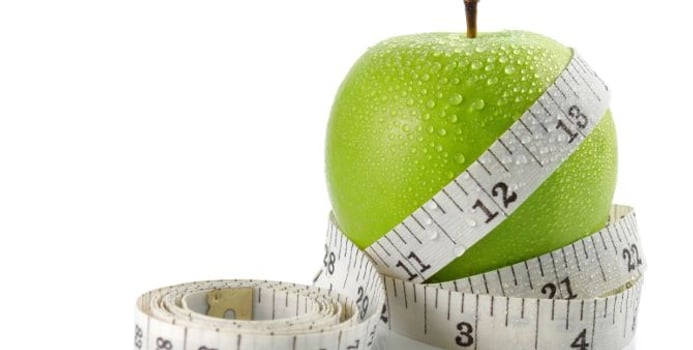Everyone knows that by counting calories you lose weight. But, how do you do it properly? You have to know how many calories you need for the size of your body and your level of activity. Then, once you know your current requirements, you have to calculate what your caloric requirements would be if you were at your ideal body weight; here's how to do it.
1. Calculate Your Current Caloric Requirements
The number of calories you need depends on your body size and level of activity: large people need more calories than small people, active people need more calories than sedentary people, men require more calories than women, etc. You can calculate the minimum amount of energy you need when you're resting, or Basal Metabolic Rate (BMR) with Mifflin St Jeor equations, but you'll need to know your weight in kilograms and your height in centimeters. Once have that information, plug it into these Mifflin St Jeor equations:
- For men, BMR=10 x weight + 6.25 x height - 5 x age + 5
- For women, BMR=10 x weight + 6.25 x height -5 x age -161
Once you have your BMR, you'll need to multiple it by an activity factor to estimate your daily requirements. There are five activity levels commonly used:
- Sedentary, which means you don't exercise at all.
- Lightly active means you engage in light exercise one to three times a week.
- Moderately active means you exercise hard for a half an hour a day, five days per week.
- Very active means you engage in strenuous activity for half an hour a day, six or seven days a week.
- Extra active means you're active throughout the day, at least five days a week; this category is usually reserved for athletes and those working manual labor jobs that keep them active.
2. Set a Target Body Weight and Determine Your New Requirements
Once you've calculated your current caloric requirements, you'll need to calculate the requirements you'll have once you reach your target weight. At target weight, your Body Mass Index should fall within the normal range of 18.5 to 24.9. Use the same Mifflin St Jeor equations to calculate your caloric needs at target body weight. The average adult needs between 1,500 and 2,000 calories per day; don't cut calories below 1,300 per day, as this can be dangerous to your health.
3. Determine How Many Calories are in Your Food
In order to successfully lose weight by counting calories, you'll need to know how many calories are in your food. Here are some guidelines:
- Carbohydrates contain 4 calories per gram.
- Proteins contain 4 calories per gram.
- Fats contain 9 calories per gram.
- Alcohol contains 7 calories per gram.
You'll need the following tools to help you interpret the nutrition labels on packaged foods:
- A food scale
- A measuring cup
- A list of foods and calories per gram
- A calculator
- A journal to record what you eat
Eat and drink normally for a week, but keep a record of your caloric intake; this will help you establish a baseline. Then, you'll have some idea of how you can reduce your caloric intake once your diet starts.



